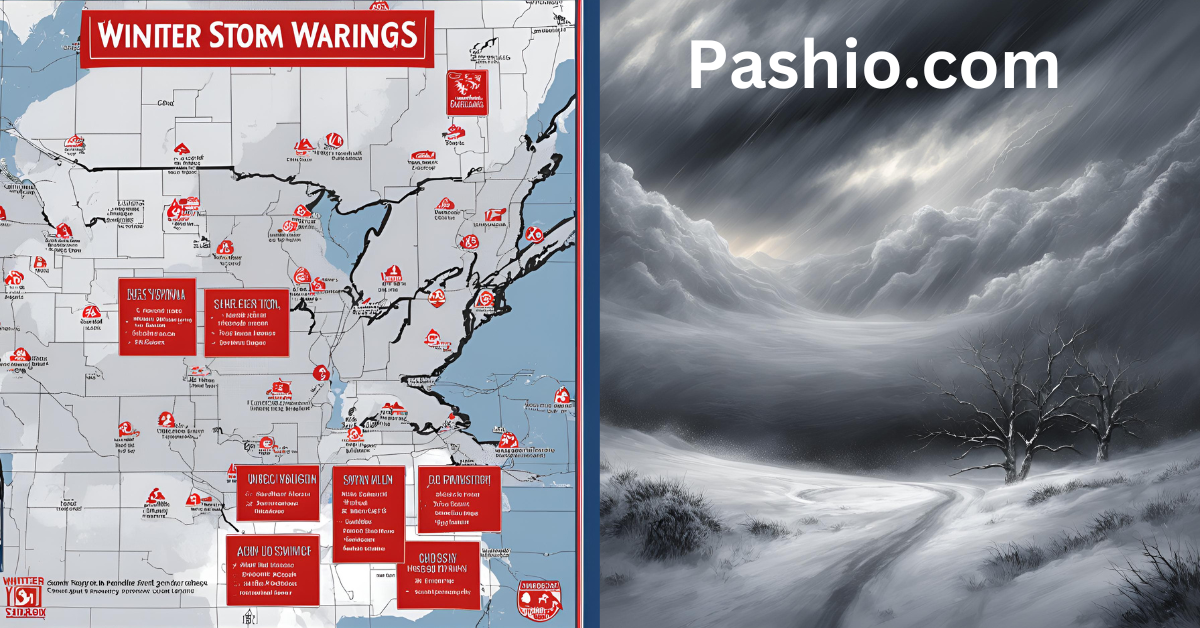As someone who has experienced the biting cold and unpredictable nature of winter storms firsthand, I can attest to the importance of staying informed about weather conditions. A winter storm warning is one of the most critical alerts you might encounter during winter. This winter storm warning is not just a notification; it’s a vital tool for ensuring safety during severe weather events.
What is a Winter Storm Warning?

Disclosure: Some of the links in this post are ‘affiliate links’. As an Amazon associate, I will receive an affiliate commission at no added cost to you if you clicks on the link and purchase the item.
The National Weather Service (NWS) issues a winter storm warning when hazardous winter weather is expected to occur. This could include heavy snowfall, sleet, or freezing rain with dangerous conditions for travel and daily life. Having lived in areas prone to severe winter weather, I’ve come to respect these warnings.
When is a Winter Storm Warning Issued?
So, what exactly triggers a winter storm warning? The criteria can vary depending on the region, but generally, it encompasses:
- Snow Accumulation: Typically, a warning is issued when at least 6 inches of snow is expected within 12 hours or 8 inches over 24 hours.
- Ice Accumulation: A warning will be issued when significant ice accumulation is anticipated—enough to damage trees or power lines.
- Combination of Conditions: Sometimes, it’s not just one type of precipitation but a mix of snow, sleet, and freezing rain that can lead to treacherous conditions.
In areas where winter storms are less common, such as the southern United States, smaller amounts of snow may lead to warnings being issued. A little snow can disrupt daily life in regions unaccustomed to winter weather.
The Importance of Winter Storm Warnings
Understanding the significance of winter storm warnings cannot be overstated. These alerts provide critical information that allows individuals and communities to prepare for potentially life-threatening conditions. Here are some reasons why these warnings are so important:
- Preparation Time: Warnings are typically issued 12 to 36 hours before severe weather hits. This window allows people to stock up on essentials, secure their homes, and make necessary travel arrangements—or avoid travel altogether.
- Travel Safety: When a winter storm warning is in effect, road conditions can deteriorate rapidly. I remember one particularly harsh winter when I ignored a warning and attempted to drive home during a snowstorm. The roads were treacherous, and visibility was poor. It was an experience I won’t soon forget—one that reinforced the importance of taking these warnings seriously.
- Public Safety Measures: Local authorities often issue recommendations during these warnings, such as staying indoors or securing outdoor items that could become projectiles in high winds or heavy snowfall. Following these guidelines can help prevent accidents and injuries.
Tips for Staying Safe During a Winter Storm Warning

Having lived through several winter storms, I’ve learned a few practical tips that can help keep you safe when a winter storm warning is issued:
- Stay Informed: Always follow local news and weather updates. Apps on your smartphone can provide real-time alerts about changing conditions. I find it helpful to follow local meteorologists on social media for timely updates.
- Avoid Travel: Stay off the roads during a winter storm warning. If you must travel, ensure your vehicle has an emergency kit with blankets, food, water, and basic tools.
- Prepare Your Home: Stock up on essentials like non-perishable food and bottled water before the storm hits. Make sure your heating system works efficiently; having backup options like space heaters can be invaluable if power outages occur.
- Dress Appropriately: Layer your clothing to trap heat effectively. I always wear insulated boots and gloves—trust me; frostbite is not something you want to experience!
- Plan for Power Outages: Winter storms often bring down power lines due to ice accumulation. Having flashlights, batteries, and alternative heating sources ready can make a huge difference if you find yourself without electricity for an extended period.
Products Are Essential For Preparation and Safety During Winter Storms:
1. Winter Survival Kits
- Emergency Survival Kit: A comprehensive kit with blankets, food stored in Airtight Food Storage Containers, Emergency Water Pouch, and other essentials for surviving winter storms.
- Car Emergency Kit: Includes items like jumper cables, a flashlight, blankets, and non-perishable snacks specifically designed for winter travel.
2. Clothing and Gear
- Insulated Waterproof Boots: Essential for keeping feet warm and dry in snowy conditions.
- Thermal Clothing: Layering is crucial during winter storms.
- Winter Gloves and Hats: Waterproof gloves and insulated hats to protect extremities from frostbite.
3. Home Preparedness
- Space Heaters: Portable heaters for backup heating during power outages.
- Weather Stripping Kits: Kits to insulate windows and doors to keep homes warm.
- Generator: A reliable generator to provide power during outages caused by winter storms.
4. Safety Equipment
- First Aid Kits: Comprehensive kits that include supplies for treating injuries that may occur during winter activities.
- Flashlights with Extra Batteries: Essential for power outages; promote durable and bright flashlights.
- Fire Extinguishers: Important for safety when using alternative heating sources.
5. Food and Water Supplies
- Non-perishable Food Items: Canned goods, freeze-dried meals, and other long-lasting food options for emergencies.
- Water Storage Containers: Buy containers designed for storing water safely during emergencies.
6. Tools and Accessories
- Shovels for Snow Removal: Durable snow shovels to clear driveways and sidewalks.
- Ice Scrapers and Snow Brushes: Essential tools for maintaining visibility while driving in winter conditions.
- Tire Chains or Snow Tires: These products enhance vehicle safety in snowy or icy conditions.
7. Communication Devices
- NOAA Weather Radio: A reliable source for weather updates and alerts during storms.
- Portable Phone Chargers: To ensure devices remain charged during power outages.
By having some of these valuable resources can enhance your preparedness and safety during winter storms.
Conclusion
A winter storm warning is an essential alert that should never be taken lightly. Having experienced the impact of severe winter weather, I understand how crucial it is to respect these warnings and take appropriate action. By staying informed and prepared, you can protect yourself and your loved ones from the dangers of winter storms. As we embrace the beauty of winter—snow-covered landscapes and cozy evenings by the fire—let’s also respect its power. When you hear that familiar phrase “winter storm warning,” remember that it’s not just about snow but safety and preparedness in the face of nature’s unpredictability. Stay safe this winter season!
Hello guy, thanks to those who read to this point I appreciate your time and support. I mostly focus on fashion, beauty, and home decor but at times I go off-topic when I see a need to address. I hope you’ve learned something from this short informative article, and I invite you to comment on a topic that you want me to address next!
References:








